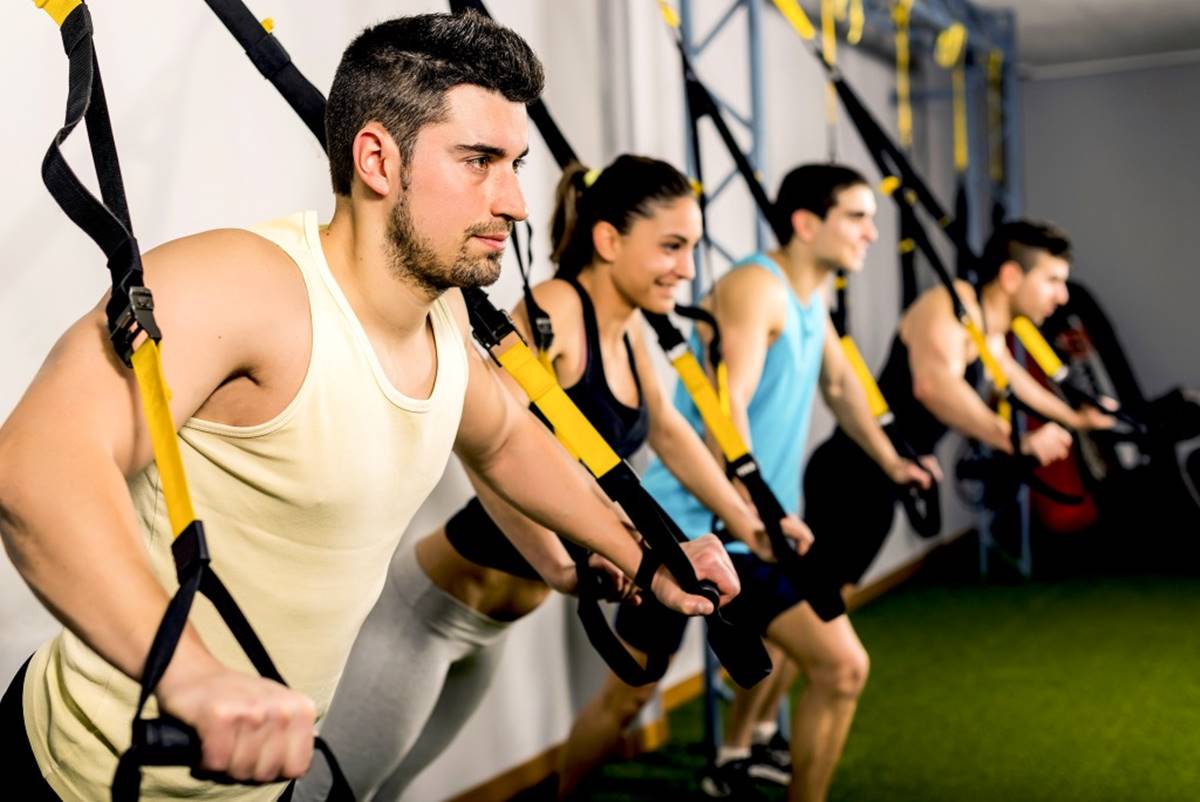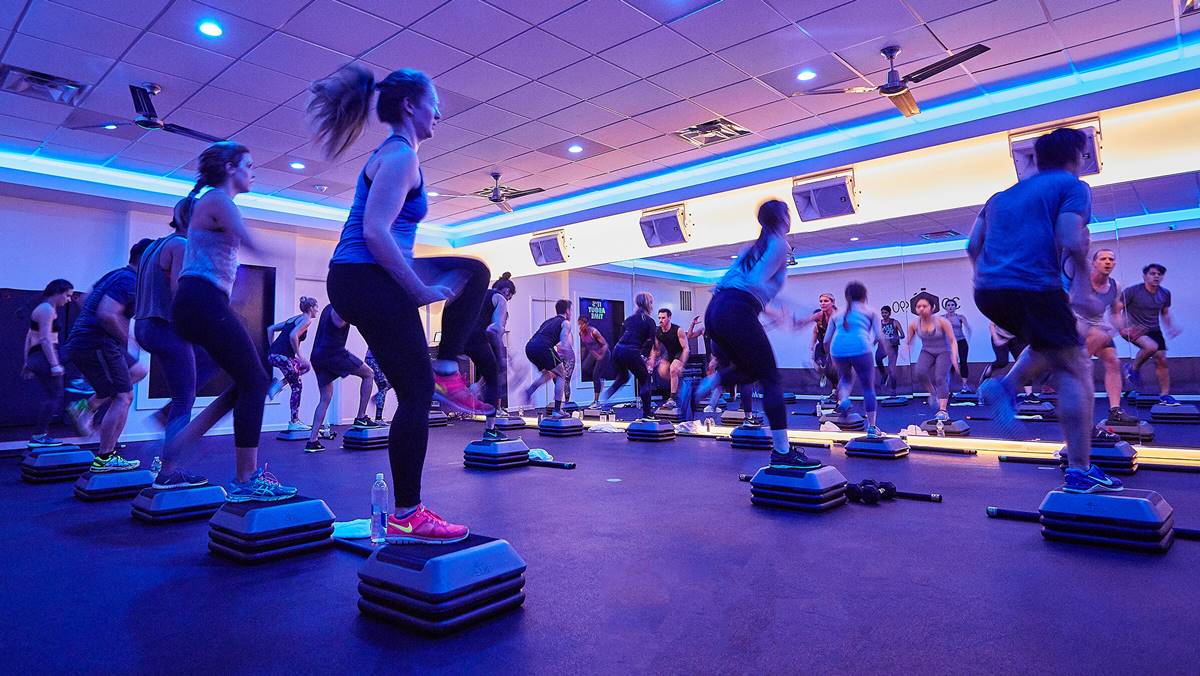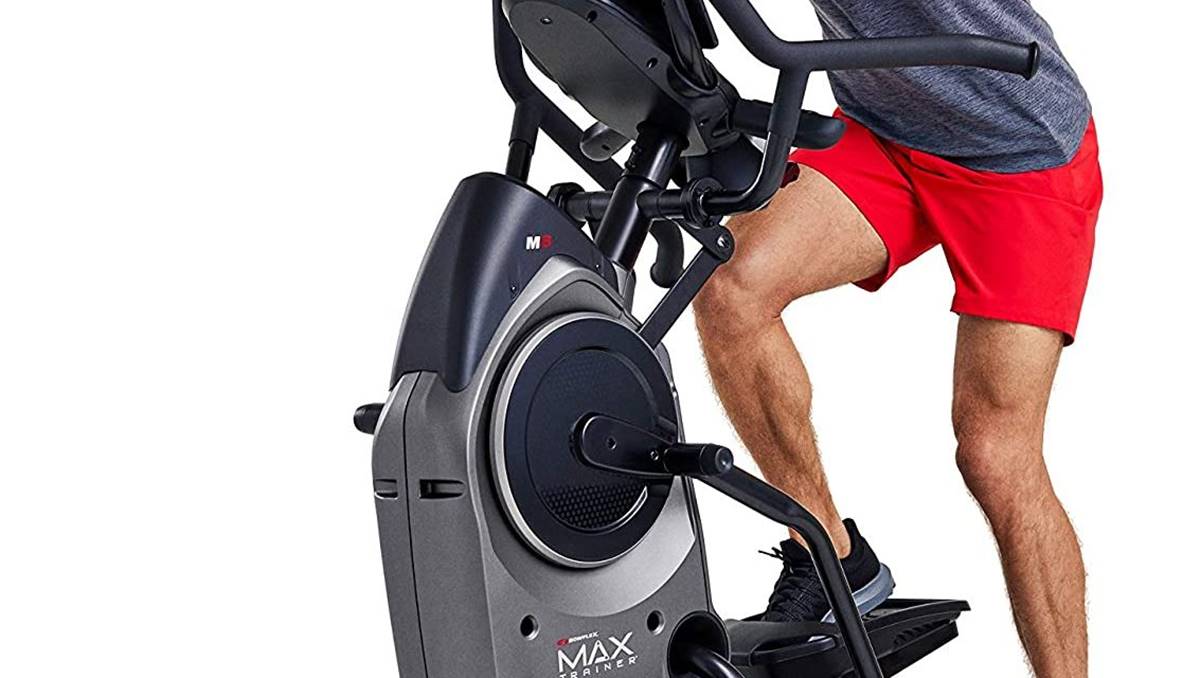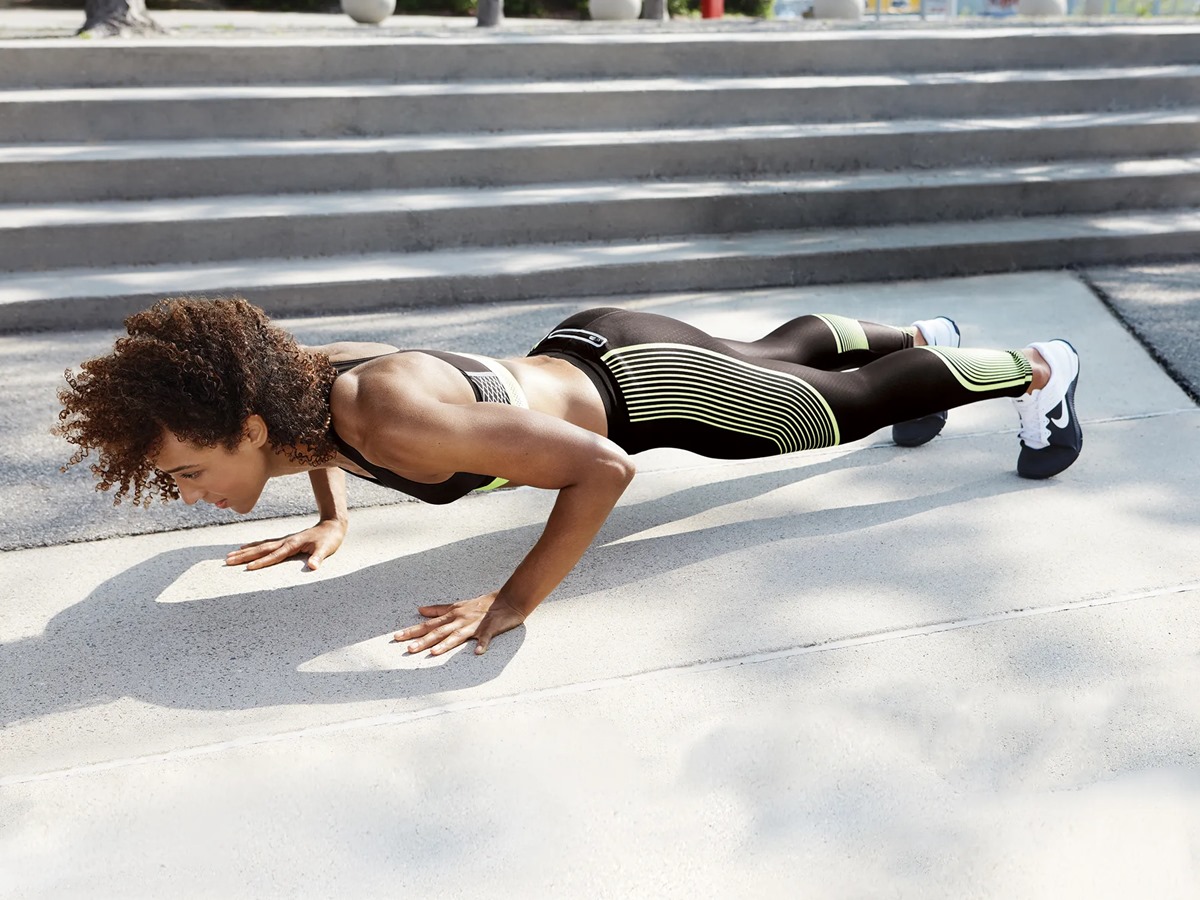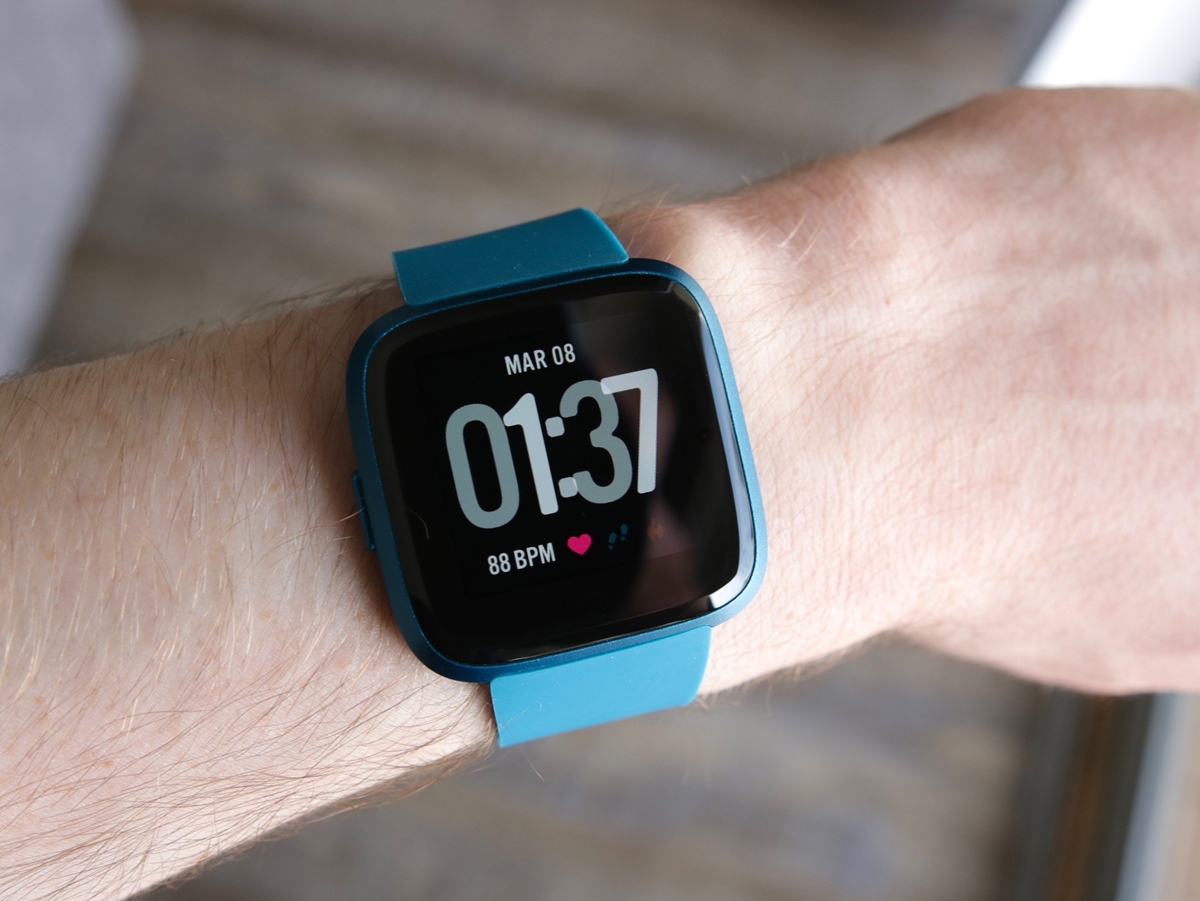Home>Misc>Featured>What Exercises Are High Intensity Interval Training


Featured
What Exercises Are High Intensity Interval Training
Modified: January 2, 2024
Discover featured exercises for high intensity interval training (HIIT) and learn how to maximize your workout with these intense and effective workouts.
Introduction
Welcome to the world of High Intensity Interval Training (HIIT), a fitness trend that has gained immense popularity in recent years. For those looking to maximize their workout efficiency and achieve optimal results, HIIT offers a time-efficient and effective solution. This article will delve into the world of HIIT, explaining what it is, its benefits, how it works, and provide common exercises and a sample workout routine.
HIIT is a training method that involves alternating periods of high-intensity exercise with periods of rest or low-intensity activity. This approach challenges your body to its limits, pushing you out of your comfort zone and subsequently boosting your cardiovascular fitness, fat burning, and muscle strength.
The appeal of HIIT lies in its time-saving nature. Due to the intensity of the workouts, HIIT sessions are typically shorter than traditional cardiovascular workouts, yet deliver incredible results. This makes it an ideal option for busy individuals looking to fit in effective workouts within a limited time frame.
In addition to time efficiency, HIIT offers a range of other benefits. For starters, it can help increase your metabolic rate, allowing your body to continue burning calories even after you’ve finished your workout. HIIT workouts also promote the production of growth hormone, which aids in muscle growth, repair, and recovery.
Furthermore, HIIT is incredibly versatile and can be adapted to various fitness levels and preferences. Whether you’re a beginner looking to improve your fitness or an advanced athlete seeking an extra challenge, HIIT can be tailored to suit your specific needs.
In the following sections, we will explore the fundamentals of HIIT, including how it works and the various exercises that can be incorporated into your training routine. We will also provide a sample workout routine to help you get started on your HIIT journey.
What is High Intensity Interval Training (HIIT)?
High Intensity Interval Training, commonly referred to as HIIT, is a form of exercise that involves short bursts of intense exercise followed by periods of rest or lower-intensity activity. Unlike traditional steady-state cardio workouts, HIIT alternates between pushing your body to its maximum capacity and allowing it to recover. This cycle of high intensity and recovery is what sets HIIT apart from other training methods.
In a typical HIIT workout, you may perform exercises such as sprints, burpees, jump squats, or mountain climbers at maximum effort for a set amount of time, usually ranging from 20 seconds to 1 minute. This is followed by a short period of rest or active recovery, where you continue to move but at a lower intensity level. This pattern is repeated for multiple rounds, creating a challenging and dynamic workout.
The concept behind HIIT is to maximize the benefits of cardiovascular exercise and strength training in a shorter period of time. By pushing your body to its limits during the high-intensity intervals, you engage multiple muscle groups and elevate your heart rate, leading to improved cardiovascular fitness and increased calorie burn.
During the brief periods of rest or lower-intensity activity, your body has a chance to recover and prepare for the next intense interval. This allows you to maintain the intensity throughout the workout without becoming overly fatigued, ultimately leading to improved endurance and stamina.
One of the key advantages of HIIT is its versatility. HIIT workouts can be designed in countless ways, incorporating various exercises and equipment. This makes it accessible to individuals of different fitness levels and preferences. Whether you prefer bodyweight exercises, resistance training, or cardiovascular activities, HIIT can be tailored to suit your specific goals.
Moreover, the flexibility of HIIT workouts allows them to be easily modified to fit into busy schedules. With a typical HIIT session lasting anywhere from 10 to 30 minutes, you can squeeze in an effective workout during a lunch break or before starting your day.
Now that you have a better understanding of what HIIT is, let’s explore the numerous benefits it offers and how it can positively impact your fitness journey.
Benefits of High Intensity Interval Training
High Intensity Interval Training (HIIT) offers a plethora of benefits that set it apart from traditional exercise methods. This dynamic and efficient workout style has gained popularity for good reason, as it delivers remarkable results in a shorter amount of time. Let’s dive into some of the key advantages of incorporating HIIT into your fitness routine.
1. Time Efficiency: One of the major benefits of HIIT is the time-saving aspect. HIIT workouts are typically shorter than traditional steady-state cardio workouts, yet they yield greater results. With HIIT, you can achieve the same cardiovascular improvements and calorie burn in a fraction of the time, making it ideal for those with busy schedules or limited workout times.
2. Increased Calorie Burn: HIIT stimulates the afterburn effect, also known as excess post-exercise oxygen consumption (EPOC). This means that even after you’ve finished your workout, your body continues to burn calories as it works to restore its oxygen levels and repair muscle tissue. This results in an increased calorie burn that can extend for hours post-workout.
3. Improved Cardiovascular Fitness: HIIT pushes your heart rate to its maximum capacity during the intense intervals, effectively improving cardiovascular endurance. The high-intensity bursts followed by periods of rest or active recovery help train your heart and lungs to work more efficiently, enhancing your overall cardiovascular health.
4. Muscle Strength and Tone: HIIT workouts incorporate compound exercises that engage multiple muscle groups simultaneously. This leads to an improvement in overall strength and muscle tone. Not only does HIIT help you burn fat, but it also helps shape and define your muscles, giving you a lean and toned physique.
5. Boosted Metabolic Rate: HIIT is known to increase your metabolic rate, which is the rate at which your body burns calories. The high intensity of the intervals forces your body to work harder and stimulates the production of growth hormone. This heightened metabolic state can last long after your HIIT session, resulting in ongoing calorie burn.
6. Adaptability: Another advantage of HIIT is its versatility. It can be customized to suit various fitness levels, from beginners to advanced athletes. The intensity, duration, and exercises can be modified to match your current fitness level and goals. This adaptability ensures that you are constantly challenged and making progress.
7. Fun and Engaging: The fast-paced nature of HIIT workouts keeps you engaged and motivated throughout the session. The variation in exercises and the challenge of pushing yourself to the limit add an element of excitement to your workouts, making them more enjoyable and sustainable in the long run.
Now that we’ve explored the numerous benefits of HIIT, let’s dig deeper into how this training method actually works.
How Does High Intensity Interval Training Work?
High Intensity Interval Training (HIIT) operates on the principle of alternating between periods of intense exercise and periods of rest or lower-intensity activity. This unique approach to fitness challenges your body in a way that traditional workouts cannot. Let’s take a closer look at how HIIT works to provide exceptional results.
During the high-intensity intervals, you perform exercises at maximum effort, pushing your body to its limits. This intense exertion increases your heart rate and engages multiple muscle groups simultaneously. As a result, you burn more calories and enhance your cardiovascular fitness by challenging your heart and lungs.
Once the high-intensity interval is completed, you enter a period of active recovery or rest. This allows your body to lower its heart rate and recover before the next intense interval. Active recovery involves performing low-intensity exercises, such as slow jogging or walking, to maintain some level of movement. Rest periods, on the other hand, involve complete rest or light stretching.
It is during the rest or active recovery periods that your body replenishes its energy stores and allows for muscle repair. This recovery phase is vital for preventing exhaustion and overtraining, as it gives your body the time it needs to recuperate and prepare for the next intense interval.
The alternating pattern of intense exercise and recovery in HIIT workouts triggers several physiological responses in your body. One of the key responses is the activation of the anaerobic energy system. This system utilizes stored energy without the need for oxygen, which allows you to sustain the high intensity of the exercises.
Moreover, HIIT promotes the production of lactate, a byproduct of anaerobic metabolism. This leads to the release of growth hormone, which has various benefits, including muscle growth, increased fat burning, and improved overall body composition.
Another important factor in the effectiveness of HIIT is the concept of excess post-exercise oxygen consumption (EPOC) or the afterburn effect. This refers to the elevated calorie burn that continues even after the workout is over. The intense nature of HIIT workouts causes your body to consume more oxygen than it usually would during steady-state cardio exercises. This increased oxygen consumption helps restore your body to its pre-workout state, resulting in an extended period of elevated calorie burn.
By incorporating intervals of high intensity and rest or active recovery, HIIT efficiently challenges your body, leading to improved cardiovascular fitness, increased calorie burn, and muscle strength. The adaptability and flexibility of HIIT workouts allow individuals of various fitness levels to reap the benefits of this training method.
Now that we understand how HIIT works, let’s explore some common exercises used in HIIT workouts.
Common High Intensity Interval Training Exercises
High Intensity Interval Training (HIIT) offers a wide range of exercises that can be incorporated into your workout routine. The key is to choose exercises that engage multiple muscle groups and elevate your heart rate significantly. Let’s explore some common HIIT exercises that you can incorporate into your training sessions.
1. Burpees: Burpees are a full-body exercise that combines a squat, plank, push-up, and jump in one fluid movement. They target your core, arms, legs, and cardiovascular system, making them an excellent choice for HIIT workouts.
2. Mountain climbers: This exercise focuses on your core and lower body. Start in a plank position, then quickly alternate bringing your knees towards your chest as if you are climbing a mountain. Mountain climbers elevate your heart rate and engage your abs, glutes, and legs.
3. Jump squats: Jump squats are an explosive exercise that targets your quadriceps, glutes, and calves. Start in a squat position, then explosively jump up, reaching your arms overhead. Land softly and immediately go into the next repetition, allowing for maximum intensity.
4. High knees: This exercise is great for targeting your lower body and boosting your heart rate. Stand upright and quickly drive your knees up towards your chest, as if marching in place. The key is to maintain a fast pace and engage your core as you raise your knees.
5. Sprint intervals: Sprint intervals are an effective way to build speed and endurance. Find a track or any open space and sprint at maximum effort for a set distance or time. Follow it with an active recovery period, such as walking or jogging, before repeating the cycle.
6. Jumping jacks: Jumping jacks are a classic exercise that engages your whole body and increases your heart rate. Start with your feet together and hands by your sides. Jump up, spreading your legs wide and raising your arms overhead. Quickly return to the starting position and repeat.
7. Bicycle crunches: Bicycle crunches target your abdominal muscles and obliques. Lie on your back, bring your knees up, and mimic a pedaling motion with your legs. As you pedal, twist your upper body, bringing your right elbow towards your left knee and vice versa.
8. Battle ropes: Battle ropes provide a full-body workout by engaging your arms, shoulders, core, and legs. Hold the ends of the ropes and create waves, alternating between up-and-down motions and side-to-side movements. The constant movement and resistance provide an intense cardiovascular and strength-training workout.
These are just a few examples of the many exercises that can be incorporated into a HIIT workout routine. Remember that the key to an effective HIIT session is to choose exercises that challenge your body and elevate your heart rate. Feel free to mix and match different exercises and create your own unique HIIT routines.
Now that we have explored common HIIT exercises, let’s put it all together with a sample workout routine.
Sample High Intensity Interval Training Workout Routine
A well-designed High Intensity Interval Training (HIIT) workout routine can deliver maximum results in a short amount of time. The following is a sample HIIT workout that incorporates a variety of exercises to keep your body challenged and engaged:
Warm-up: Begin with a five-minute warm-up to prepare your body for the intense workout ahead. This can include exercises such as jogging in place, jumping jacks, or dynamic stretches.
1. Exercise 1: Burpees – Perform burpees for 30 seconds, giving it your all. Focus on maintaining proper form throughout the movement.
2. Rest: Take a 15-second rest, allowing your body to recover and catch your breath.
3. Exercise 2: Mountain climbers – Perform mountain climbers for 30 seconds, moving at a fast pace and engaging your core and legs.
4. Rest: Take a 15-second rest, focusing on controlled breathing and preparing for the next exercise.
5. Exercise 3: Jump squats – Perform jump squats for 30 seconds, exploding up into a jump from the squat position. Land softly and immediately go into the next repetition.
6. Rest: Take a 15-second rest, shaking out your legs and preparing for the next exercise.
7. Exercise 4: High knees – Perform high knees for 30 seconds, bringing your knees up to your chest in a quick and controlled manner. Engage your core and maintain a fast pace.
8. Rest: Take a 15-second rest, focusing on breathing and preparing for the next exercise.
9. Exercise 5: Battle ropes – Grab the battle ropes and perform waves for 30 seconds, creating an up-and-down or side-to-side motion with your arms. Keep a steady pace and engage your entire body throughout the movement.
10. Rest: Take a 15-second rest, allowing your muscles to recover and preparing for the next exercise.
11. Exercise 6: Bicycle crunches – Lie on your back and perform bicycle crunches for 30 seconds. Alternate between twisting your upper body and bringing your knees towards your chest, engaging your abs and obliques.
12. Rest: Take a 15-second rest, focusing on controlled breathing and getting ready for the final exercise.
Cooldown: Finish the workout with a five-minute cooldown, focusing on stretching and slow walking to gradually bring your heart rate down.
This sample HIIT workout routine incorporates a variety of exercises that target different muscle groups and cardiovascular systems. Remember to listen to your body, modify exercises as needed, and gradually increase the intensity and duration of your HIIT workouts as your fitness level improves.
By incorporating this sample HIIT routine into your fitness regimen and consistently challenging your body with high-intensity intervals, you can achieve remarkable results in terms of cardiovascular fitness, calorie burn, muscle strength, and overall endurance.
Now that you have a sample workout routine, it’s important to be aware of some considerations and safety precautions when performing HIIT workouts.
Considerations and Safety Precautions
While High Intensity Interval Training (HIIT) can be an effective and efficient workout method, it’s important to keep in mind certain considerations and safety precautions to ensure a safe and effective training experience:
1. Warm-up and Cool-down: Always begin your HIIT workout with a proper warm-up to prepare your body for the intense exercises ahead. This can include dynamic stretches and light cardio activities. Similarly, end your workout with a cooldown period to gradually bring your heart rate down and allow your muscles to recover.
2. Start at Your Fitness Level: HIIT workouts can be intense, so it’s crucial to start at a fitness level that matches your capabilities. Beginners may need to modify exercises and reduce the intensity or duration of intervals until their fitness improves. Listen to your body and progress at a pace that is comfortable yet challenging for you.
3. Proper Form: Pay close attention to your form during each exercise to prevent injury and ensure maximum effectiveness. Maintain proper alignment, engage your core, and use proper breathing techniques. If you are unsure about the correct form, consider working with a qualified fitness professional for guidance.
4. Rest and Recovery: While HIIT is intense, it’s important to incorporate rest and recovery days into your training schedule. Your muscles need time to repair and rebuild after challenging workouts. Aim for at least one or two days of rest or lower-intensity activity each week to allow your body to recover adequately.
5. Stay Hydrated: HIIT workouts can be sweat-inducing, so it’s crucial to stay hydrated. Drink water before, during, and after your workouts to replenish lost fluids and maintain optimal performance. Listen to your body’s thirst signals and drink according to your individual needs.
6. Gradual Progression: As you become more comfortable with HIIT, you can gradually increase the intensity, duration, or frequency of your workouts. Push yourself, but avoid overexertion or pushing beyond your limits too quickly. Remember that consistency and gradual progression are key to long-term success.
7. Listen to Your Body: Pay attention to any pain, discomfort, or unusual fatigue during your workouts. If something doesn’t feel right, take a break, and consult with a healthcare professional if needed. It’s always better to prioritize safety and well-being over pushing through unnecessary discomfort.
8. Variety and Rest Days: Incorporate a variety of exercises and alternate muscle groups during your HIIT workouts. This helps prevent overuse injuries and keeps your workouts interesting. Additionally, ensure that you have rest days or lighter workout days in your schedule to prevent burnout and give your body time to recover.
Remember, it’s important to consult with a healthcare professional before starting any new exercise program, especially if you have any underlying health conditions or concerns.
By keeping these considerations and safety precautions in mind, you can enjoy the many benefits of HIIT while minimizing the risk of injury or overexertion. Now that you have the necessary knowledge, it’s time to lace up your shoes, push your limits, and start reaping the rewards of High Intensity Interval Training.
Conclusion
High Intensity Interval Training (HIIT) offers a game-changing approach to fitness, providing a time-efficient and effective way to achieve optimal results. By incorporating short bursts of intense exercise followed by periods of rest or lower-intensity activity, HIIT challenges your body and pushes it to new limits.
We explored what HIIT is and how it works, understanding that the alternating pattern of intense exercise and recovery elevates your heart rate, engages multiple muscle groups, and stimulates various physiological responses. The benefits of HIIT are plentiful, including increased calorie burn, improved cardiovascular fitness, enhanced muscle strength and tone, and a boosted metabolic rate.
Through common HIIT exercises and a sample workout routine, we highlighted the versatility and adaptability of HIIT. Whether you’re a beginner or an advanced athlete, there are exercises and variations that can be tailored to suit your fitness level and goals.
Of course, it’s important to approach HIIT with consideration and take safety precautions. By following warm-up and cooldown protocols, starting at your fitness level, maintaining proper form, allowing for rest and recovery, staying hydrated, gradually progressing, and listening to your body, you can enjoy the benefits of HIIT while minimizing the risk of injury or overexertion.
As with any fitness program, it’s always recommended to consult with a healthcare professional before starting HIIT, especially if you have any underlying health conditions or concerns.
Now armed with knowledge about HIIT, you have the opportunity to incorporate this powerful training method into your fitness routine. Remember, consistency is key. By committing to regular HIIT workouts and pushing yourself to your limits, you can unlock an incredible level of physical fitness and achieve your fitness goals.
So, lace up your shoes, turn up the intensity, and embark on your HIIT journey. Get ready to sweat, challenge yourself, and enjoy the incredible benefits that High Intensity Interval Training has to offer.

